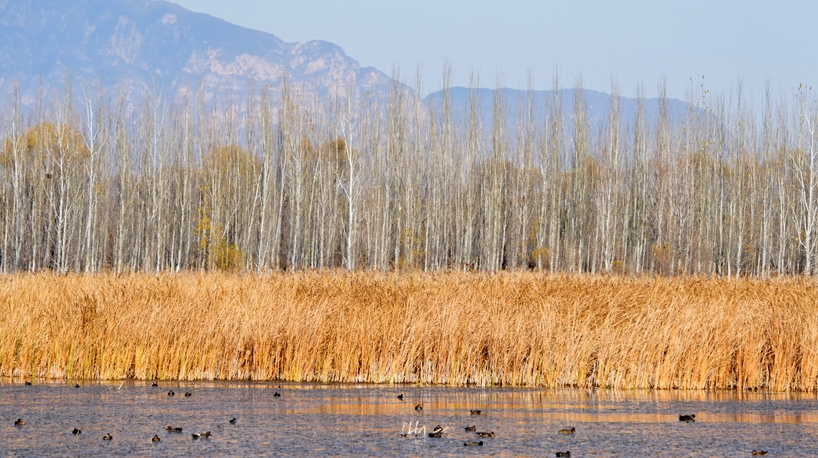WUHAN, Nov. 8 (Xinhua) -- Yan Jun, head of the Wuhan Birdwatching Association, is on the way to the Baoxie Lake to observe Baer's Pochard (Aythya baeri), a national first-class protected diving duck in China.
The migratory species mainly breeds in Russia's Far East and eastern China, and spends winters in southern China, Myanmar, Thailand, Bangladesh, India and Japan.
Since the 1990s, the population of Baer's Pochard has dropped sharply due to habitat loss, over-hunting, human interference and other factors.
They have been listed as "critically endangered" species by the International Union for Conservation of Nature.
"Richard Heron, an international conservation expert on Baer's Pochard, once said pessimistically that Baer's Pochard was on the verge of extinction," said Yan.
In 2014, Lu Qun, a member of the Wuhan Birdwatching Association, shared with other members a photo of a duck that he'd never seen before.
"Some experts said it couldn't be Baer's Pochard, as they should have migrated to northeast China in April and May. But Lu Qun was not convinced. He insisted that it was Baer's Pochard, and went to search for it again," said Yan.
Lu's efforts paid off. He finally found a hatching area of Baer's Pochard, and managed to record their entire incubation process.
International bird experts then confirmed that Baer's Pochard had "settled down" in Wuhan, the currently known southernmost breeding site for the species.
Thanks to the significant improvement of wetlands and the ecosystem in Wuhan in recent years, more and more Baer's Pochards have been spotted in the city.
"In March this year, 110 Baer's Pochards were found at the Baoxie Lake. Once we find a new habitat for Baer's Pochard, which gathers over 10 Baer's Pochards, we will regard the place as an important monitoring site. One of our members will be there for daily monitoring and patrol operations," added Yan.
So far in Wuhan, there are three major breeding areas for Baer's Pochard, with a total population of over 600.
Produced by Xinhua Global Service













